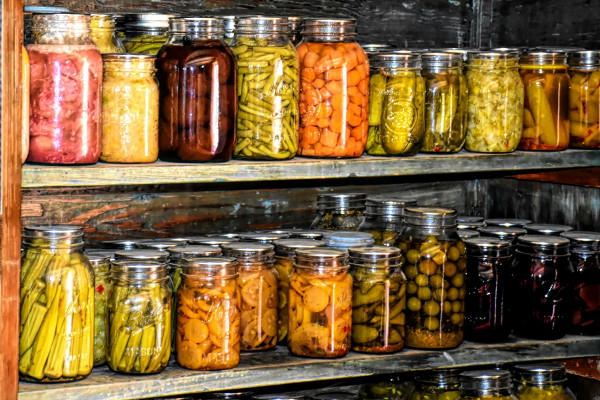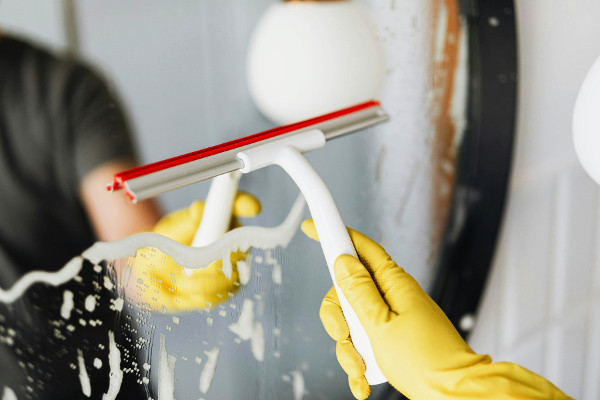Practical Tips on How to Organize Your Fridge, Freezer, and Pantry to Minimize Food Waste
Food waste has become a real problem in households all over the world. Whether it’s tossing out expired produce, leftovers that were forgotten at the back of the fridge, or overbuying at the grocery store, we’re all guilty of it from time to time. But here’s the thing: a little bit of organization in your kitchen can go a long way in reducing waste and saving you money. It doesn’t need to be complicated or time-consuming. In fact, with just a few simple steps, you can transform your fridge, freezer, and pantry into a space where food stays fresh longer, and nothing goes to waste.
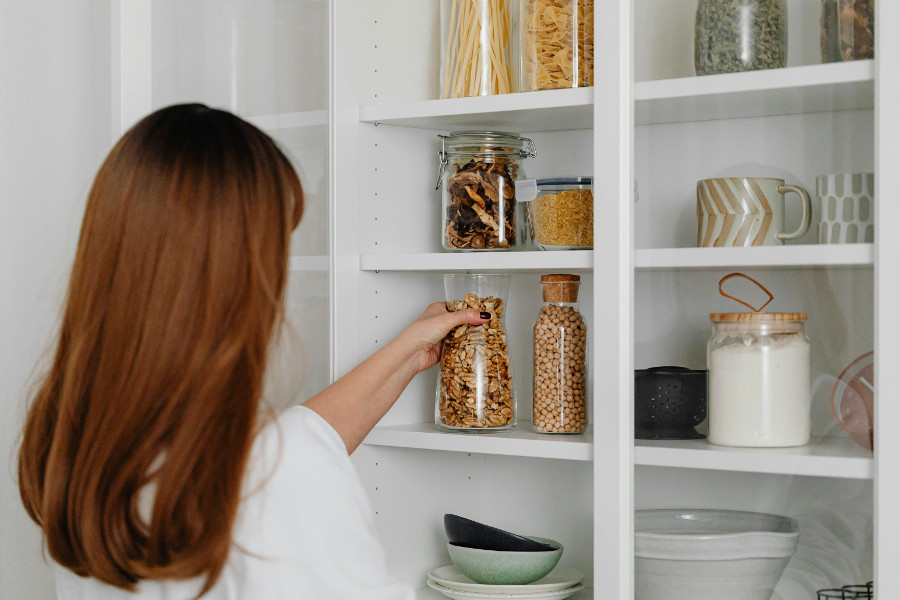
1. Start with a Clean Slate: The Deep Clean
Before you dive into any sort of organization, the first thing you need to do is clear out the clutter. It might sound like a hassle, but trust me, it’s worth it.
Tip: Deep Clean and Purge
Take everything out of your fridge, freezer, and pantry. I mean, everything. Wipe down the shelves, drawers, and even the walls. Trust me, once you start looking, you’ll be surprised at how much food you didn’t even realize was hiding in there. Check expiration dates on everything, and toss out anything that’s expired, moldy, or just plain gross. Things like half-opened sauces or canned goods that have been sitting there for months often get forgotten. A quick deep clean will give you a fresh starting point and help you see exactly what you’ve got - and what needs to be used up.
2. Organize by Frequency of Use: A Simple but Effective System
Ever open your fridge and wonder why things are hidden behind half-eaten takeout containers or an old bottle of ketchup? It’s all about visibility. The more accessible your food is, the more likely you are to use it before it spoils.
Tip: Put Most-Used Items at Eye Level
Take a moment to think about what you use most. Is it eggs, yogurt, or fresh veggies? These are the things you want to keep in the front and at eye level. That way, every time you open the fridge, you’ll see what you need to use up first. Things you don’t grab as often - like specialty sauces or canned goods - can go in the back or on higher shelves. For your pantry, grouping similar items together is key. Put all your grains in one section, snacks in another, and spices somewhere they’re easy to grab. Clear containers are great for this, too, as they let you see exactly what you’ve got.
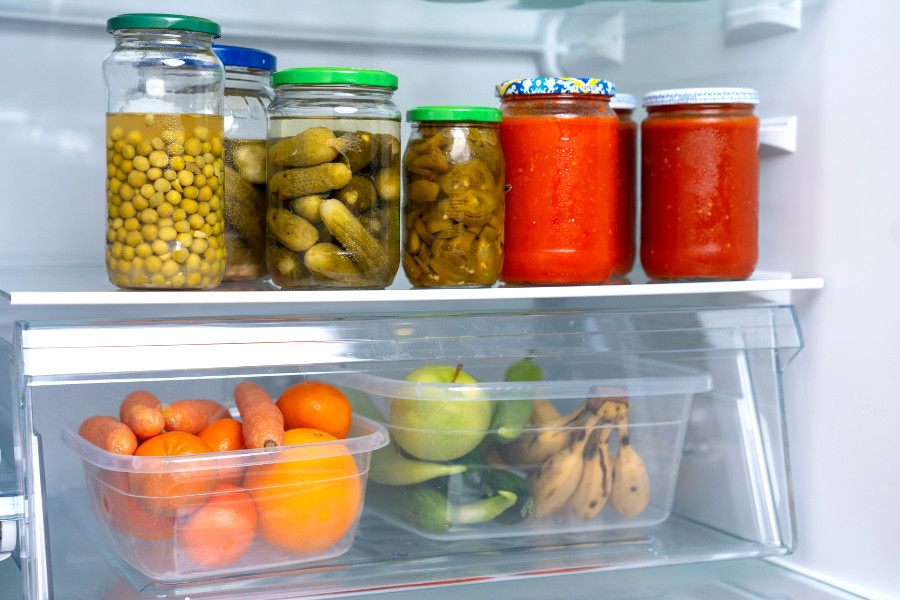
3. Keep Track of Expiration Dates: No More Forgotten Items
It’s all too easy to forget about that carton of milk in the back of the fridge that’s about to expire or the half-finished box of pasta you opened a while ago. Keeping track of expiration dates is a game changer when it comes to reducing waste.
Tip: Create a Running Inventory
Once you’ve cleaned everything out, take a few minutes to write down what’s left in your fridge, freezer, and pantry. If an item has an expiration date, jot it down next to it. Stick the list somewhere visible - like the inside of your fridge door or on a bulletin board in your kitchen. This way, you’ll always know what needs to be used up and when. And if you add new groceries to the mix, just update the list accordingly. Some people even keep receipts on the fridge as a way to track what’s in stock, making it easier to stay on top of what’s available and what’s running low.
4. Meal Planning: A Strategic Way to Prevent Overbuying
Meal planning can seem like a chore, but it’s a solid way to keep things from piling up in your kitchen. When you plan your meals based on what you already have, you’ll avoid buying more food than you need - and you’ll also make sure nothing goes to waste.
Tip: Plan Meals Around What You Already Have
The next time you go grocery shopping, take a look at your inventory list and plan your meals around what you’ve already got. For example, if you have half a bag of spinach in the fridge, plan a salad or add it to a stir-fry or smoothie. Use up fresh produce before it wilts and plan your meals so you’re always using older items first. By doing this, you’ll prevent the dreaded scenario of buying something new just to realize you already have it - and that it’s about to expire.
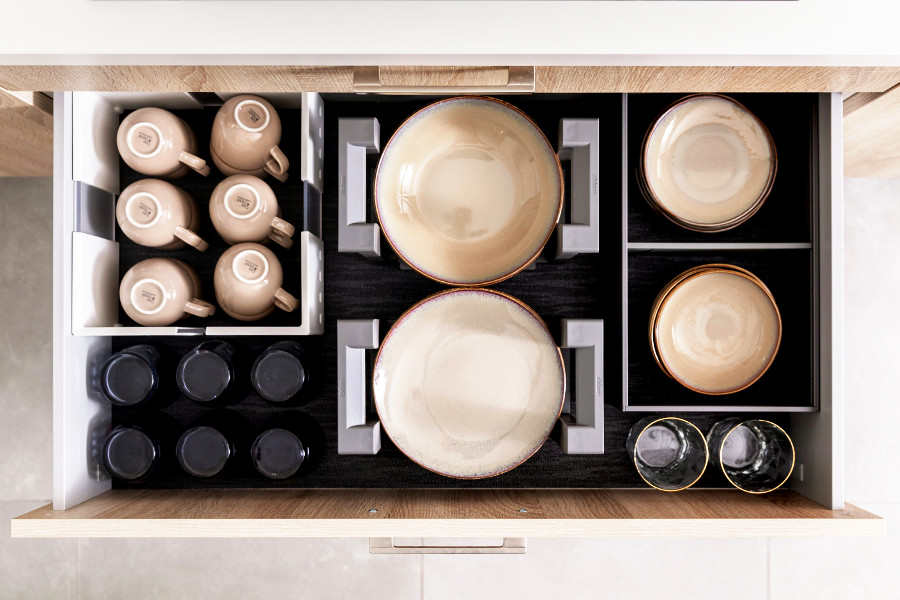
5. The Inventory System: Stay on Top of What You Have
Let’s face it: it’s easy to forget what’s in the back of your fridge or pantry, especially when you're in a hurry or have a lot on your plate. But keeping track of what you have on hand is one of the easiest ways to cut down on food waste.
Tip: Use Receipts and Lists as a Running Inventory
Every time you go grocery shopping, hang onto the receipts and add them to your inventory list. Tape it up next to your kitchen calendar or on the fridge door for easy access. This will give you a running tally of everything you’ve bought, and you can cross off items as they run out. For a fun twist, some people use magnets or sticky notes to keep track - moving them from “Have” to “Shop” as things run out or get added. This simple method keeps you on top of what’s in stock and what’s missing, helping you avoid buying unnecessary duplicates.
6. Use Ingredients More Efficiently When Cooking
It’s not just about organizing your kitchen - it’s about making sure you’re using ingredients in the smartest way possible. Repurposing leftovers and using everything to its full potential means fewer trips to the grocery store and less food waste in the trash.
Tip: Repurpose Leftovers and Plan for Versatility
Got leftover roasted vegetables? Throw them into a soup or toss them in a salad. Extra rice or pasta? They make a great base for a stir-fry or casserole. If you have extra herbs or greens that are starting to wilt, blend them into a pesto or use them in smoothies. By using ingredients in different ways, you get more mileage out of them and reduce waste. Plus, having some meal prep done in advance - like chopping veggies or cooking grains - makes it easier to throw a meal together quickly and efficiently.
A couple of websites where you can find additional tips:
- r/CleaningTips (Reddit)
- r/Declutter (Reddit)
- Clean Mama (blog)
- Clutter-Free Now (blog)
- A Slob Comes Clean (blog)
Conclusion: A Few Small Changes Can Make a Big Difference
At the end of the day, organizing your fridge, freezer, and pantry to minimize food waste doesn’t have to be a huge undertaking. It’s all about small, manageable changes that add up over time. Whether it’s cleaning out your fridge regularly, planning meals based on what you already have, or keeping track of expiration dates, these little adjustments can help you make the most of the food you buy.
So, take a few minutes today to get started - clean out your fridge, create a simple inventory, and start planning meals around what you’ve already got. It’s an easy way to save money, reduce food waste, and make your kitchen a more efficient, less cluttered place.

